Whats the Best Way to Feed Corydora Catfish
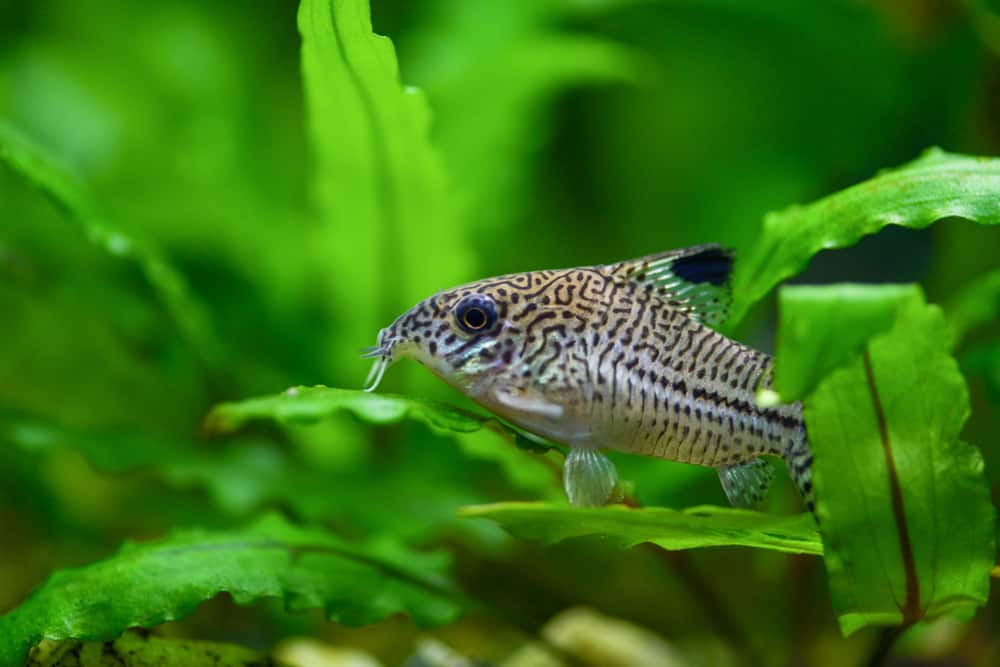
Whether you're looking to add Corydora Catfish to your tank, or you already have some as residents, you know you want to do the best you can at taking care of them.
However, what should you feed these lovable bottom feeders, exactly?
How do you know what they might like?
Thankfully, there's a food out there for every fish to keep them at their best and help them thrive.
From the best food for them to their behavior and care, we've got everything you need to know about feeding your Cory cats right here.
What Is the Best Food for Cory Catfish?
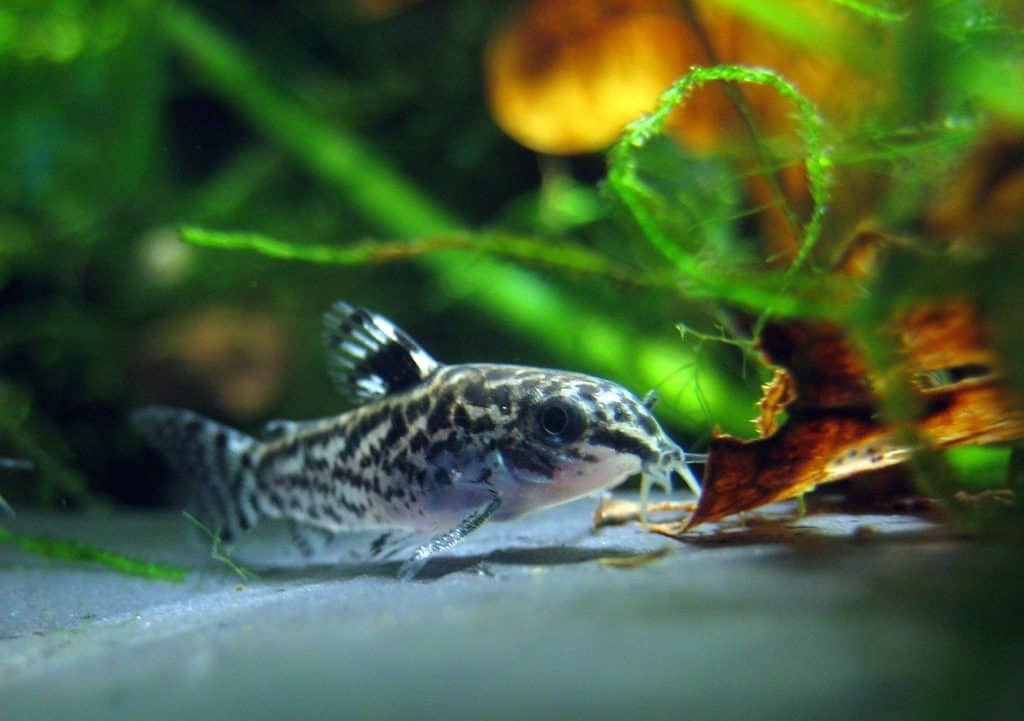
Corydoras are great, hardy fish that are wonderful in freshwater community tanks.
There are quite a few different types of Cory cats, in lots of various sizes and colors, and all of them make fantastic beginner fish.
Cory cats are bottom feeders, meaning they will happily munch on algae and whatever leftover food falls to the bottom of the tank.
There are more than 170 species of Corydoras belonging to the Callichyidae family, and they come from places like South America, Northern Argentina, the Andes Mountains, and the Atlantic coast.
In the wild, they inhabit smaller streams and rivers, oxbows, ponds, and marshy environments.
While they are peaceful, you should take extra care when handling them, as a few species may have a toxin in their spines.
While generally not picky about their food, they do need to get the proper nutrients.
These bottom feeding omnivores will occasionally come to the surface for food.
They should have a rounded, well balanced diet to keep them at their best, but what exactly should that diet consist of?
1. Fish Flakes
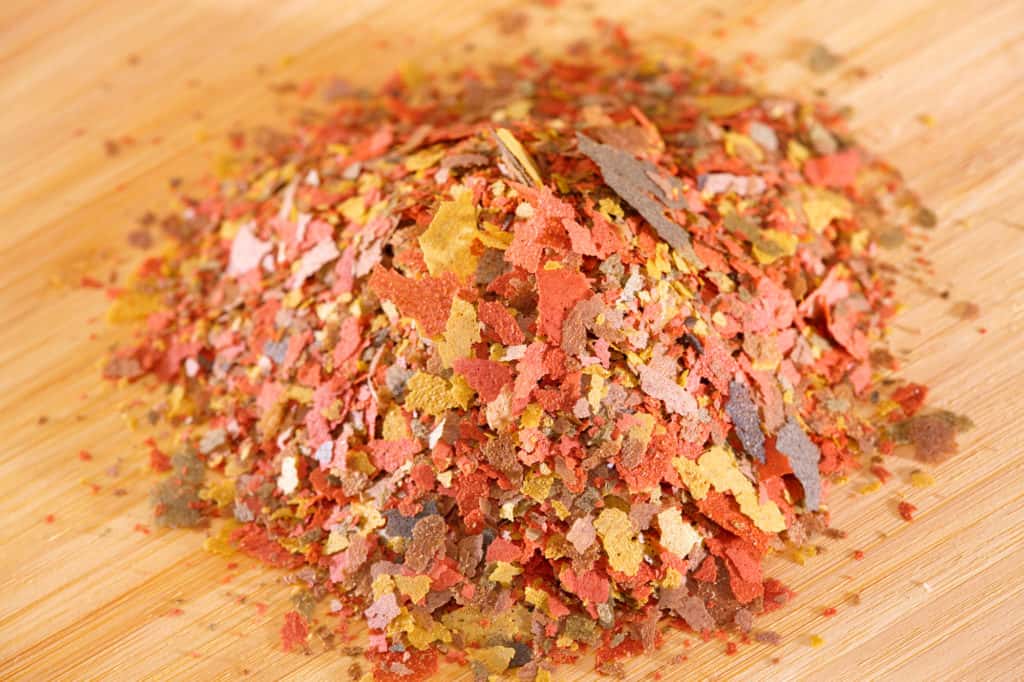
One great food for Cory cats includes a good flake.
They may not be crazy about them, but they can give your Cory cats some of their daily nutrients.
A good flake is somewhat of an essential staple if your Cory cats are in a community tank.
You can use the flakes to distract your other fish so you can feed your Cory directly, and any leftover flakes that sink to the bottom can be eaten up by your Cory, too.
To pick a good flake, you'll want something that is made up of shrimp meal, earthworms, fish meal, spirulina, squid meal, and enough vitamins and minerals to deliver a good amount of protein and nutrients to them.
Just don't try to feed your Cories only flake leftovers.
Whatever leftovers sink to the bottom will not be enough to sustain them.
Pair flakes with some kind of bottom feeder tablet to ensure your Cories get all the nutrients they need to thrive.
2. Algae Wafers

One essential staple in the Corydora Catfish's diet is algae, and one way to deliver all the algae they may need is with sinking algae wafers.
While a lot of algae tabs and wafers are made with herbivorous fish in mind, that doesn't mean they're off-limits for omnivores.
Just be sure to pick a high-quality flake that your Cories are likely to eat.
Leftover tablets get slimy when left in the water too long, so try to avoid having leftovers.
These are one of the best things to feed them when they live in a community full of fish that can outswim and beat them to flakes.
The wafers will sink down to their level where they have a fair shot getting a good meal.
While a staple, you might not have to provide them with a lot of algae yourself, as they will skim off whatever is growing on the bottom and lower parts of the aquarium.
3. Bloodworms
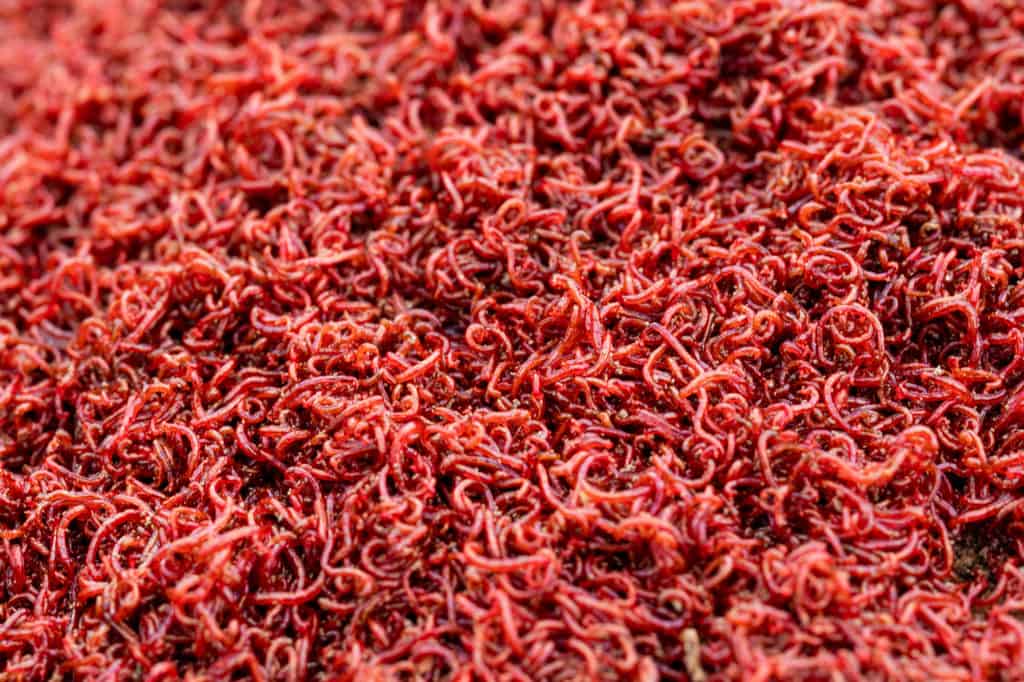
One food you might already be feeding your fish on a regular basis are bloodworms.
These are one of the most popular foods for a myriad of fish, and you may already have some in your freezer.
Cories should have the option of both live and freeze-dried worms, given to them occasionally as treats.
They're a fantastic source of protein, but feeding them live or frozen bloodworms daily isn't the best idea unless you're trying to condition them for breeding.
Some of the best live, freeze-dried, and frozen worms for Corydora Catfish include grindal worms, white worms, blackworms, and tubifex worms.
Just be sure to keep in mind the risks that lie within live food when feeding them.
Always remember to follow the feeding instructions on bags of frozen and freeze-dried food as well.
When choosing to feed them live food, make sure they're either coming from a reliable source or you're raising the worms yourself.
Live worms may carry parasites that frozen and freeze-dried don't, so it's our recommendation to always make sure you know exactly where your Cory's food came from.
4. Bottom Feeder Tablets
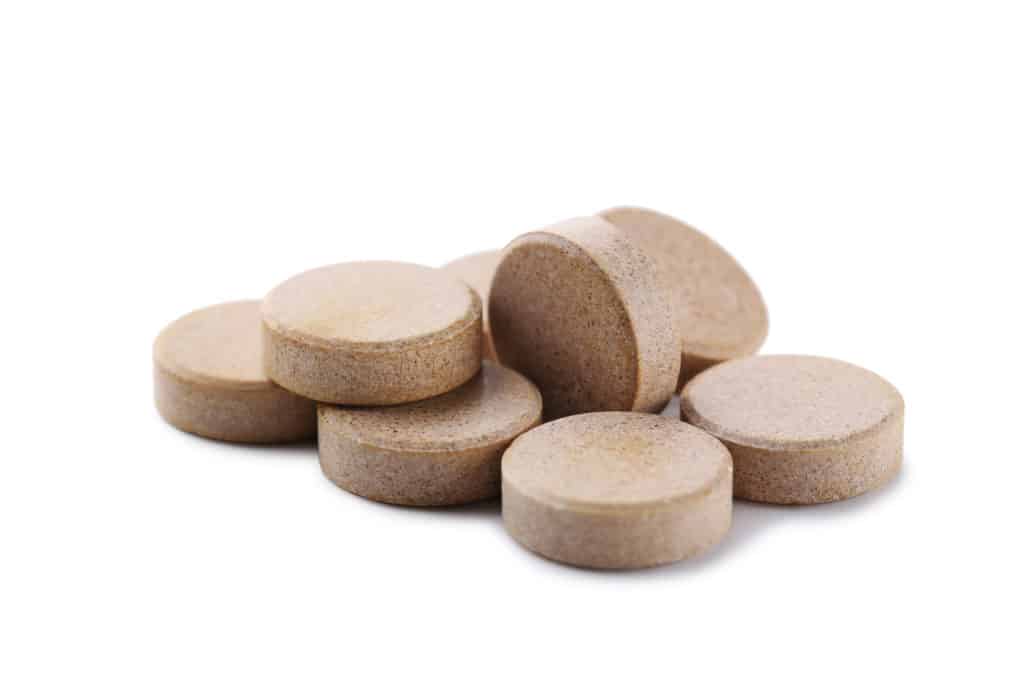
This one might be a bit obvious, but a good bottom feeder tablet can go a long way.
The tablets sink down to where your Corydoras will find them, and dissolve slowly so they can nibble and feed on them at their leisure.
There are many tablets that are designed for Cory specifically, and these are great for getting them their daily nutrients.
They're also great for when you have to be away from them for a day or two.
Just make sure you don't give your Cory more than they can chew, literally.
A lot of these tablets, when left uneaten, can create quite a mess.
Make sure you know how much your Cory will eat to avoid having to clean out their tank more than you should have to.
5. Shrimp Pellets
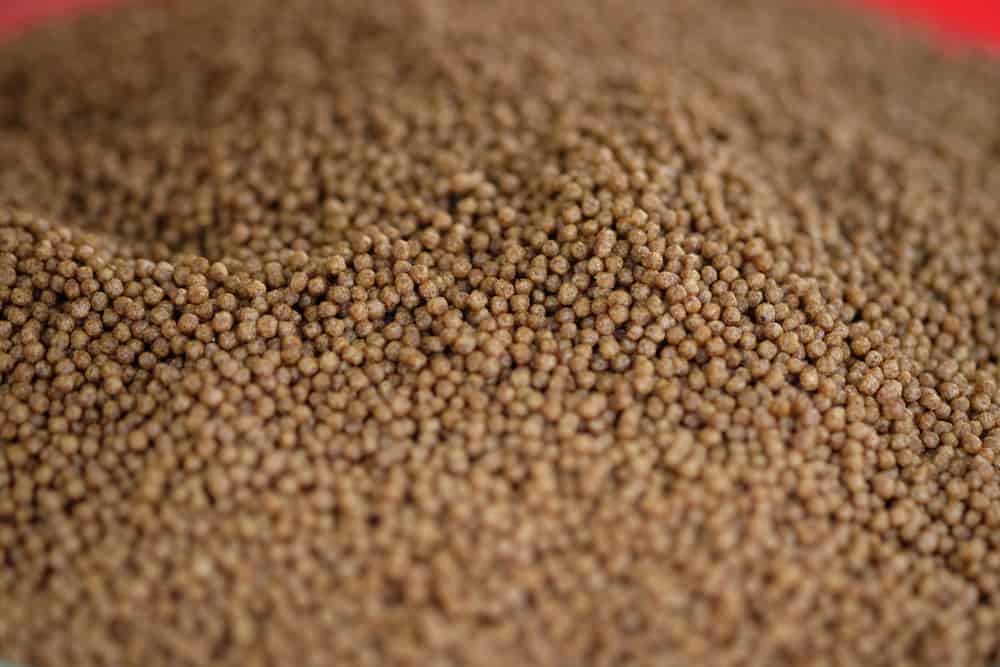
While they don't eat shrimp when they're tankmates, you can feed your Cory cats shrimp pellets!
Shrimp pellets are fantastic for tropical fish and bottom feeders alike.
They're slow-sinking and have quite a few of the nutrients your Cory cats need.
However, since they don't naturally eat shrimp, don't be surprised to see your Cory only nibbling on them.
They aren't as crazy for them as they are for algae and other bottom-feeder tablets.
One way to help make sure the shrimp pellets get eaten is to soften them before putting them in the tank.
You can soak the shrimp pellets beforehand so they're nice and soft before they get to your Cories.
Feeding Cory Catfish Fry
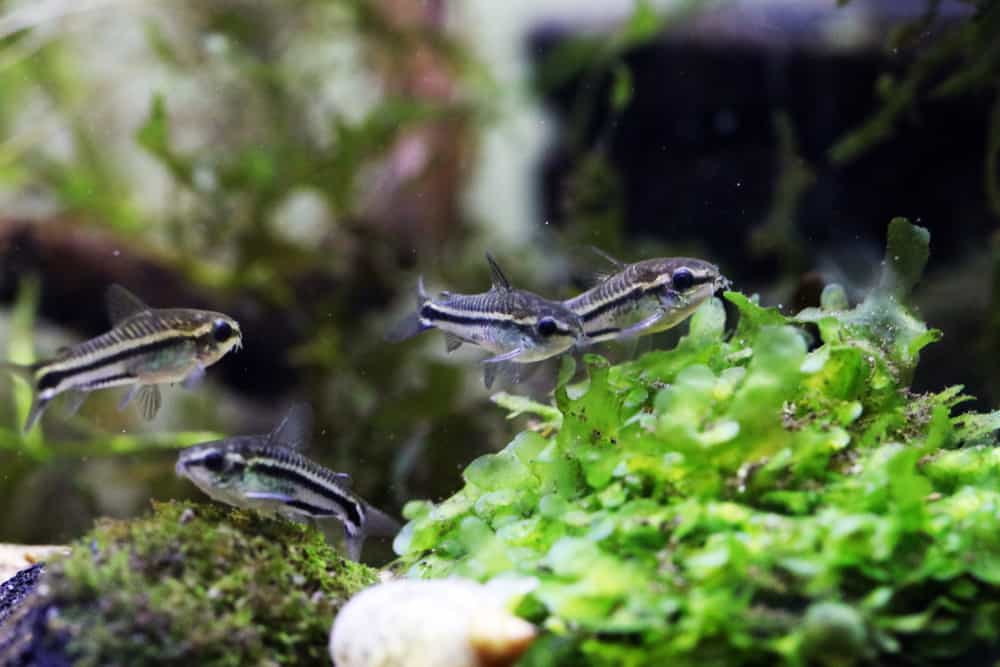
As you might expect, feeding your Corydora fry is a bit different than feeding fully-grown adults.
Feeding your Cory fry isn't hard, especially during the first few days of their lives.
The eggs should hatch three to five days after being laid, and once they do, they will absorb their yolk sac over the course of two days.
Once the sac is gone, you can feed the fry micro-worms, baby brine shrimp, and fry food.
As they grow, you can move up the ladder and feed them bigger and bigger food until they're able to eat like their parents.
Just be sure to keep the Cory fry in their own nursing tank and away from adults until they are adults themselves.
You can start them on algae wafers when they're about four weeks old, and then keep them in a five-gallon tank so they may grow in peace at about six or seven weeks.
They can either be released into a community tank or sold to new homes at about three months of age.
By then, they should be completely off fry food and baby flakes and completely on to adult food.
How to Feed Corydora Catfish

Meanwhile, with adults, there is a lot less to worry about.
To feed your Cory cats properly, feed them an amount that they can eat in three minutes or less when feeding them twice a day.
If you only plan on feeding them once a day, give them a serving of whatever they can eat in five minutes.
If you primarily feed them pellets and wafers, give them one wafer for every two Cory cats in your tank.
Technically, Corydoras can go without food for a week before they begin to truly starve and die off, but we do not recommend letting them go that long without food.
If you find yourself unable to feed your Cory cats for more than four days, it's best to leave them with a caregiver or someone who can feed them until you're able to do so again.
However, we feel it's important to mention that it's easier to overfeed your Cory cats rather than starve them.
Depending on a few different factors, sometimes a mixture of tablets, frozen or live treats, and algae that is already growing in your tank can keep up to six Cory cats fed for a day or two.
Is There Any Food Corydoras Will Refuse?
While Cory cats aren't picky, there are a few kinds of food that they may refuse to eat.
Don't worry too much if you see them refusing new things like the following.
You should really only be concerned if they stop eating altogether.
One thing they won't eat are snails and whole shrimp.
Corydoras are peaceful and won't hunt down their tankmates.
Because they don't eat shrimp, they may refuse to eat shrimp pellets.
Of course, this depends on the fish.
As far as snails are concerned, they're too large to be eaten by Corydoras.
Another food they aren't crazy about are vegetables.
This can depend on the Cory, but most of the time, they will ignore whatever vegetables come their way in favor of whatever else they can find.
While you can try to feed them things like cucumbers and peas, we wouldn't expect them to go to town on them.
Going Beyond Their Food
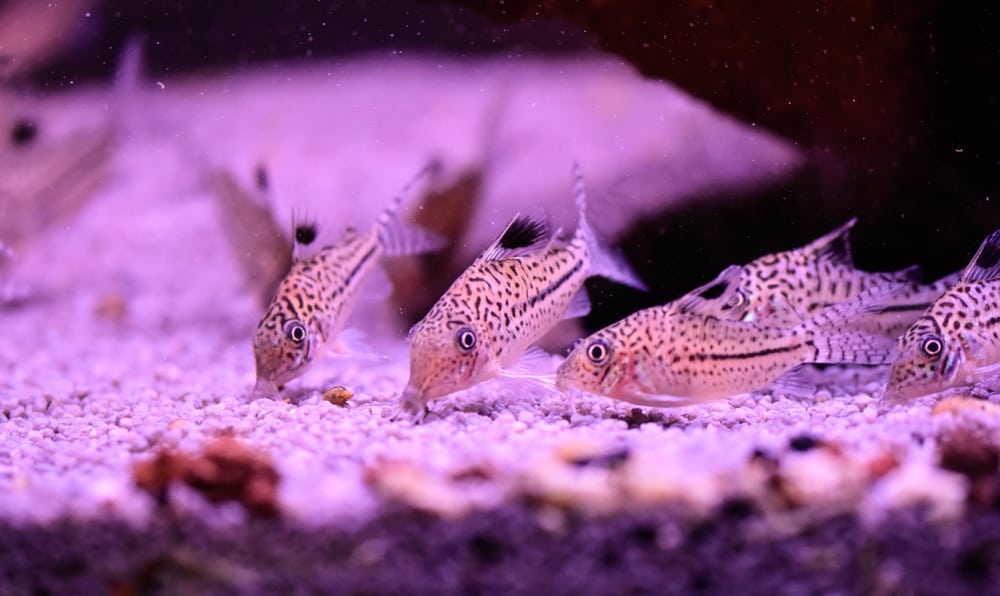
Cory Cat care doesn't end at their food.
They still need a properly sized tank, the right pH, and the right temperature to keep them happy and healthy.
These requirements can depend on the species, but generally speaking, a 10-gallon tank should work for dwarf species, while a 20-gallon is best for any larger Cory cats.
They feel safer and happier when they live in groups, and it's best to keep six of them at a time at the very least.
Cories get along great with pretty much any other non-aggressive fish, but that isn't to say that conflicts can't happen.
If you house Corydoras with goldfish, for example, they may starve, as goldfish will eat pretty much anything they can get their mouths on.
Be sure you're not housing your Cory cats with a species that might out-eat them and leave them to starve.
You should also make sure the water is the right quality, the pH is balanced, and the temperature is just right for them.
Make sure to find out what your specific species of Cory cats need for their tank so you can make things just right for them.
Common Behaviors and How to Know When They're Hungry
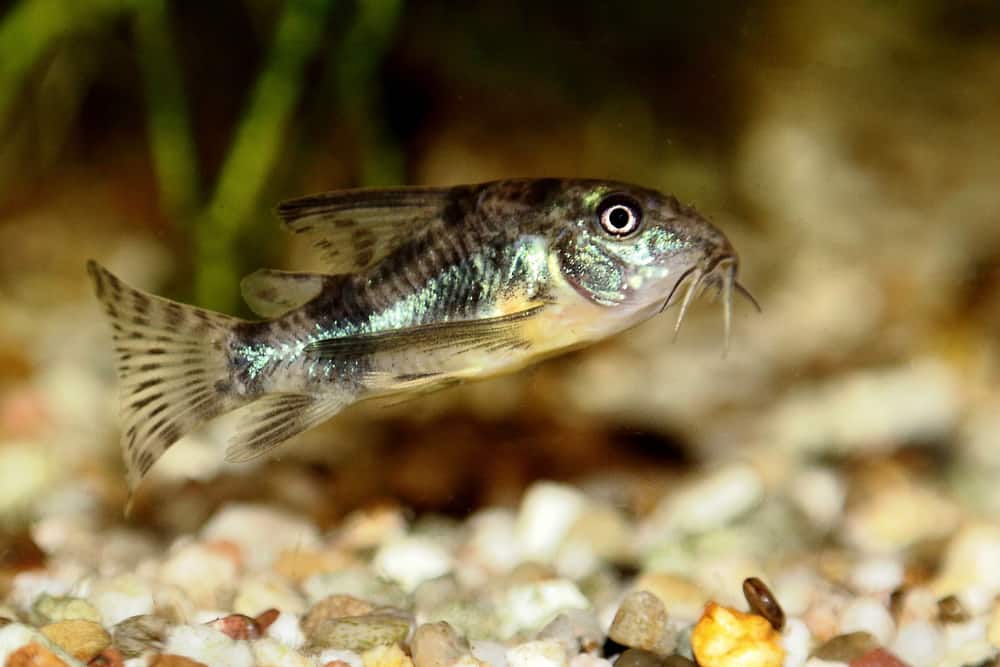
With everything else out of the way, there's only one question left: how are you supposed to know when your Cory cats are hungry?
The answer is that they're always hungry.
They will constantly be nibbling on algae or up for eating whenever you feed them.
Though we feel we should mention that, while Cory cats do graze on algae, it is not their primary food source, and they should not be used to keep a tank clean, nor should they be left to only eat algae.
A very common thing to spot your Corydoras doing is eating their own eggs and fry.
This doesn't mean that they're starving.
They regularly eat their own fry.
It's unknown why they do this, exactly, but we do know that it's a good idea to keep them in a tank separate from their eggs if you're breeding them.
You also might see them swimming along the bottom of their tank, scavenging for food and moving around surface gravel.
This is perfectly normal, and it does not mean they're starving.
They're natural scavengers.
They are more than likely just fine, but that's not to say that you shouldn't feed them daily!
However, an odd condition you should keep an eye out for are white patches around their barbels and mouths.
This can become a serious condition that, when left untreated, can cause them to stop eating and eventually die.
The white patches are caused by poor water conditions, so it's extremely important to identify the problem and resolve it before your Corydoras take a turn for the worse.
Chew on That
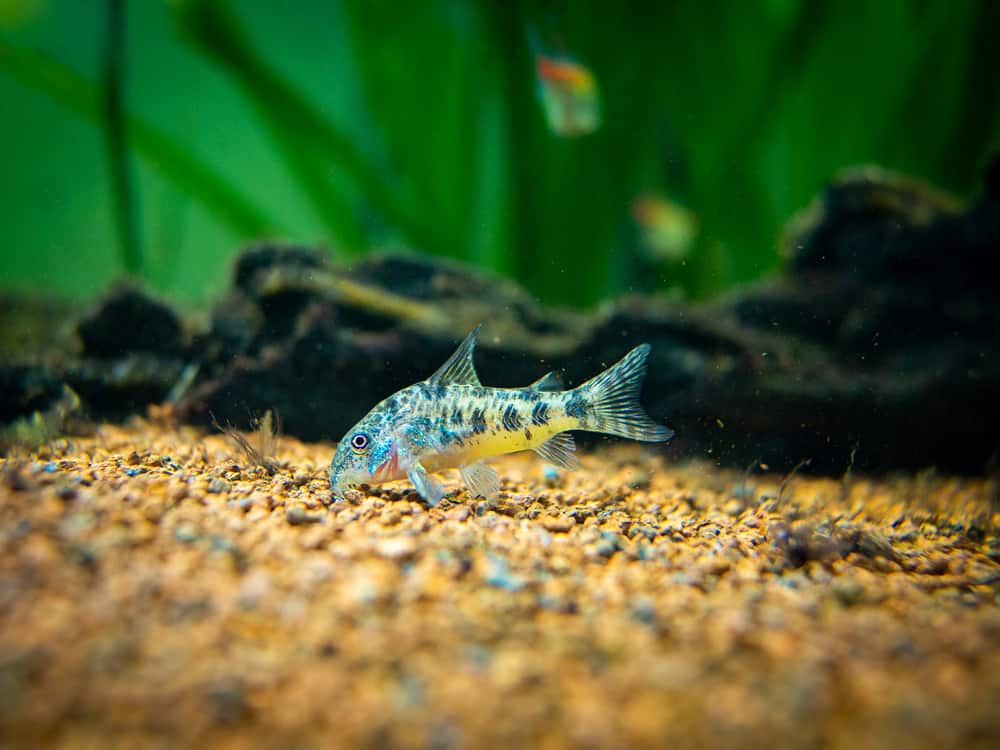
Now you know exactly what to feed your Corydora catfish, and how to provide them with a balanced diet tailored to them.
You're also well-equipped to give the best lives possible to your Cory.
All there is left to do now is figure out which food combination is best for your Cories.
No matter what you decide to feed your Cory cats, we know that you care, and you're more than likely doing the best job you can at caring for them!
We hope your Cory cats enjoy their food, and they live long, happy lives in your community tank.
What do you feed your Cory cats?
Do you have any advice for keep them at their best?
What fish are your Cories housed with?
Leave us a comment down below.
We always look forward to hearing what you have to say.
Source: https://www.fishtankreport.com/best-food-for-cory-catfish/

0 Response to "Whats the Best Way to Feed Corydora Catfish"
Postar um comentário